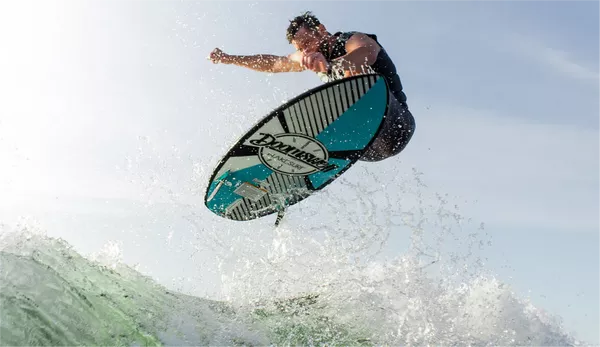Wakesurfing, a thrilling fusion of surfing and wakeboarding, has taken the watersports world by storm. While carving across the wake behind a boat is exhilarating in itself, there’s a whole new dimension of excitement to be explored: catching air. As wakesurfers push the boundaries of the sport, mastering aerial maneuvers has become a sought-after skill. In this comprehensive guide, we’ll delve into the techniques and strategies necessary to elevate your wakesurfing experience to new heights.
Understanding the Basics
Before attempting to catch air wakesurfing, it’s crucial to have a solid grasp of the fundamentals. Wakesurfing involves riding the boat’s wake without being directly attached to it, relying on the boat’s propulsion to generate a continuous wave. Riders typically start close to the boat, gradually moving further back into the wake’s sweet spot to harness its power.
To initiate airtime, riders must first build up enough speed and momentum. This requires finding the optimal position within the wake, where the wave’s energy is strongest. Additionally, riders must maintain proper body positioning and balance to execute maneuvers effectively.
Choosing the Right Equipment
Selecting the appropriate wakesurfing equipment is essential for achieving airtime. While traditional wakesurf boards are designed for stability and maneuverability, aerial enthusiasts often opt for smaller, lighter boards with increased maneuverability. These boards typically feature a more aggressive rocker and sharper rails, facilitating quicker turns and higher jumps.
In addition to the board, the boat’s setup plays a crucial role in creating the ideal conditions for catching air. Proper weighting and ballast distribution can significantly impact the size and shape of the wake, providing the necessary push for aerial maneuvers. Experimenting with different setups and configurations allows riders to fine-tune their approach and maximize airtime potential.
Mastering the Pop
The key to launching into the air while wakesurfing lies in mastering the “pop” – the explosive upward motion generated by shifting weight and redirecting energy. To achieve maximum pop, riders must utilize proper technique and timing.
As the boat accelerates and enters the wake’s sweet spot, riders should bend their knees and crouch into a low stance, preparing to spring upward. As the wave approaches, riders should focus on driving their back foot into the board while simultaneously extending their legs, leveraging the board’s upward momentum to propel themselves skyward.
Timing is critical when executing the pop, as mistiming can result in a loss of momentum or instability. Riders should aim to explode upward just as the wave begins to crest, harnessing the wave’s energy to achieve maximum height and distance.
Executing Aerial Maneuvers
Once airborne, wakesurfers have the opportunity to showcase their skills with a variety of aerial maneuvers. From basic grabs and spins to more advanced flips and rotations, the possibilities are endless. However, executing aerial maneuvers requires a combination of skill, balance, and confidence.
For beginners, mastering basic grabs such as the indy or method provides an excellent starting point for building aerial awareness and control. As riders become more comfortable in the air, they can progress to more advanced maneuvers, incorporating spins, rotations, and flips into their repertoire.
Regardless of skill level, safety should always be a top priority when attempting aerial maneuvers. Wakesurfers should ensure they have adequate space and clearance to safely execute maneuvers, taking into account factors such as boat speed, wave size, and proximity to other riders.
Perfecting the Landing
Successfully executing an aerial maneuver is only half the battle – the landing is equally important. Proper technique and timing are essential for landing smoothly and maintaining control upon re-entry.
As riders begin their descent, they should focus on spotting their landing and preparing to absorb the impact. Bending the knees and keeping the board level helps to distribute impact forces evenly, reducing the risk of injury. Additionally, maintaining forward momentum upon landing helps to maintain stability and prevent catching an edge.
Practice makes perfect when it comes to landing aerial maneuvers, and riders should be prepared to endure some trial and error along the way. By focusing on proper technique and maintaining a positive mindset, riders can gradually improve their landing consistency and confidence in the air.
Conclusion
Air wakesurfing represents the pinnacle of skill and athleticism in the world of wakesurfing. By mastering the fundamentals, choosing the right equipment, and practicing proper technique, riders can unlock a world of aerial possibilities. Whether you’re a seasoned pro or a novice enthusiast, the thrill of catching air is sure to elevate your wakesurfing experience to new heights. So, grab your board, hit the waves, and prepare to soar like never before.

